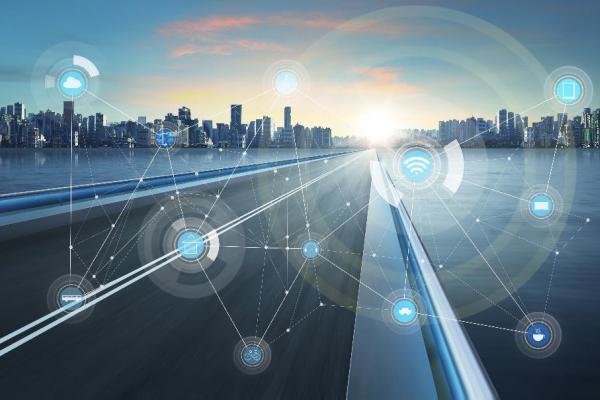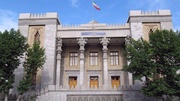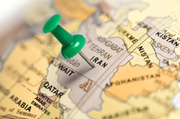It is a new technology and an ambitious one: to connect almost all things to the Internet, exanimate objects as well as moving vehicles in a network of billions of knots. The prospects are tantalizing and no uninitiated should venture into the heart of this network as threats would be overwhelming, the opportunities, confusing and overexciting. The foundations of the network have already been laid when in 2015, 5 billion objects connected to the Internet.
Currently, the globe is aided by billions of sensors which help objects to connect. The technology occupies almost any object, fixed in a place or mobile; kitchen appliances, cars, clothes, etc. harbor sensors; the sheer attraction of the technology had brought about dynamism in many countries to rapidly develop and approve in state legislatures standards of conduct and application to enjoy the potentials inherent in the tech.
Iran has seen also a certain level of dynamism, mainly by government, to cope with and to catch the fast growing train of technology, through strategic plans to address infrastructures of IoT (Internet of Things) beginning in 2016 by the Ministry of ICT, which is not the sole government authority to develop the technology.
The potentials are huge; all city amenities including water and wastewater, electricity utility, gas, transportation, education and health will enjoy the connectivity, so valuable in a modern time of immediate data transfer and the need to such speed. The observers however are cautious that the potential threats and violation of the privacy would make the technology a less appealing territory; the utter wide scope of the tech will definitely have opportunities to web hackers and other data collectors of citizens’ private life. The ever-increasing number of attacks would be even worse problem when a huge number of objects connect to the internet, thus providing the hackers easy preys. New devices such as CCTVs would be target of more pernicious attacks for their data of more seducing nature for the curious minds and or anyone who wants to make profit by selling to paparazzi who seek for information every possible nuke and cranny, of celebrities and of fashion industry.

Analysis proves the security loopholes and weak links in tech firms with lax security measures make them the excellent option for Denial of Service attacks and huge fake traffic directed to their sites and paralyzes services for clients. It is conceivable that with automobiles connected to Internet, any hacker of medium ingenuity would deactivate the brake system or air conditioning system and pose serious hazards to the people onboard; another hacker would infest a factory’s main computers with malwares; this would be of huge consequences when a nuclear facility is the target.
All these challenges have been addressed with modest success. Late in 1990s, spams were the major source of headache for users of popular email services. They were unwanted for ads send in bulk by companies and industries. A punitive legislation in 2003 was passed and email services improved in their smart filtering of spams, to the relief of their users.
It is also possible that national parliaments would address the issue of possible abuse by passing similar laws where the developers of products used in internet of objects would be required to comply with security standards in place; interference of this sort however should be subject to specialist panels which would provide necessary frameworks. In Iranian setting, this activity remains a territory of an organization, Communications Regulatory Authority (CRA) of the Islamic Republic of Iran, while IoT will cover country’s whole frequency spectrum.
Azim Fard, director of the CRA told Mehr News Technology service the project to organize rare sources of communication, a project defined by Resistance Economy policies had a priority on IoT; “the CRA should attend to its inherent regulatory duties, since the frequency spectrum is allocated to devices and objects connected to the Internet is a territory of the CRA.”
“The network thus created by connection of cars and regulatory and monitoring systems of water, gas, and transportation sectors will require a special section of frequency spectrum under strict monitoring,” he added. “Currently, individuals are connected only through mobile devices, which takes less bandwidth and spectrum; however, IoT use different protocols, requiring new sort of regulation of radio networks and sensors sending data through them; software will be developed to handle different sensors in a certain protocol; security is of utmost importance; in an ecosystem of sensors, family privacy, network privacy, and health of the whole system constitute issues for consideration.”

Fard highlights the preliminary stage of work on the project; “we have already identified part of resources of the domain; the project is multidimensional and proper grounds should be prepared. In any rate, the new system will carry data on radio networks; large volumes of communication should be channeled through available networks; on the other hand, huge traffic passing through will add to the responsibilities of Telecommunication Infrastructure Company of Iran (TIC) which will contribute to the progress of the project,” he detailed. “IoT challenges structures beyond the resources available to a ministry; even the Judiciary should intervene to oversee the legal requirements and enforce the ethical principles of using the technology; police and the insurance will also be involved; when, for example, a car connects to the internet through the protocol and it hits another car in an accident; the technology to be implicated and the regulating body to be questioned for possible damages should be identified through rules governing the use of all the elements of the system,” Fard told Mehr News.
“We predict that IoT will infiltrate all fields; we predict also hosting of 50 billion sensors through which a population of 80 million would be connected, the number of sensors being large as individuals would need more than a single sensor to connect to different objects around themselves; we would not reach the figure however by the end of the Six Development Plan and will be preparing the capacities,” he added.
With the new technology on place, who can help ignoring the huge potentials? Definitely, all industries and economic sectors will sought to join the network. This will transform the mode of activity in many sectors including industry, retail sector, factories, and even agriculture, which is believed to be the pioneer in adopting the benefits of the IoT. The amount of investment in installing facilities in agriculture will reach from $ 30m in 2015 to more than $ 75m in 2020. The sensors installed provides live data about livestock and crops to farmers; a tilling machine working on land would connect to Internet to find about the timing of fertilizers and irrigation, not to mention optimal harvest time.

A sector to enjoy IoT services is health where sophisticated machines synchronize with database to serve the patients more efficiently; MRI machines breakdown would be predicted by a central data base monitoring the machine’s status, thus improving the overall quality of health and treatment services.
Retail sector will also be availed by IoT services through working on wireless technologies to send the list of their products to potential customers on their mobile phones. Users will also be able to find specific product in the nearest center to their location in a marketplace.
Transportation will also enjoy the technology to improve communications of ships, trucks, etc. in form of a network to which all are connected; a striking feature is to control the temperature inside the storage of food items where corruptible food products would be saved timely; in public transport sector, intercity buses will use sensors and other sort of software to collect demographic data of commuters and the road, thus will optimize the fuel consumption.
The automobiles will be connected to a network of complicated maps and will be guided through internet the most viable routes to reach the destination from among the thousands of possible routes; this will contribute to lighter traffic and the declined number of traffic accidents; the machinery in a factory would be shut down before a technical glitch damages the whole system by using real-time data provided by surrounding devices.
These all are only part of huge potentials of the IoT; thus, the investment in the new untapped technology will take unprecedented sums; the Ministry of ICT has provided no information on the investment in IoT, however, Telecommunications Co. has underway the preliminary studies according to media speculations. Mohammad Khwansari, head of Iran Telecommunication Research Center assures the readers of the project of IoT in Iranian setting. According to the official, the roadmap will soon be prepared on the modes of application once the preliminary studies was completed. “The roadmap will establish an ecosystem of IoT where tech companies will find paths to the market through encouragements coming from government regulatory bodies and policies,” he added. “In a fast-growing modern setting, life has become more digitalized than ever, since virtually everything will be connected to network and will receive data and change overall behavior of the family members.”

























Your Comment